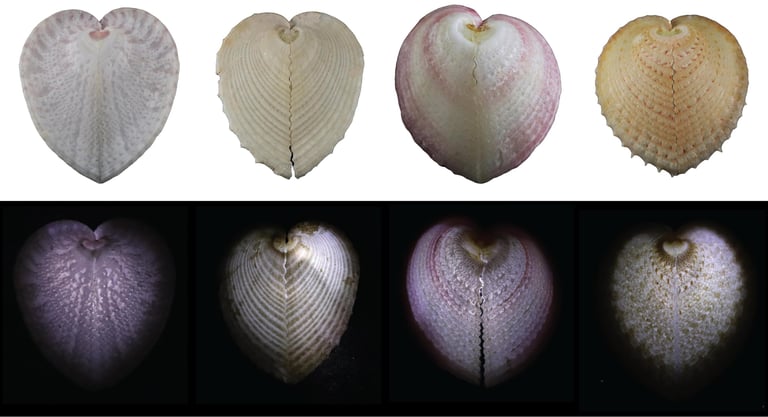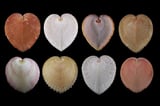Heart Cockles' Natural Fiber Optics Inspire Future Tech and Algae Protection
November 19, 2024
A groundbreaking study published in Nature Communications on November 20, 2024, reveals the unique symbiotic relationship between heart cockles and algae.
These bivalve molluscs, known scientifically as Corculum cardissa, provide a safe habitat for photosynthetic algae while receiving essential nutrients in return.
Researchers from the University of Chicago, led by Dakota McCoy, discovered that heart cockles have evolved tiny windows in their shells that function like fiber-optic cables.
These windows consist of long, thin fibers of aragonite, a crystalline form of calcium carbonate, which guide light and filter out harmful ultraviolet radiation.
The aragonite structures are designed to allow twice as much photosynthetically useful light to pass through compared to harmful UV light.
This innovative fiber optic structure not only nourishes the symbiotic algae but also protects them from damaging UV rays.
McCoy emphasized that these natural windows act as a sunblock, shielding the algae from UV damage, which could lead to mutations and cancer.
This light-filtering ability is particularly important in the context of climate change, as it may help reduce the risk of bleaching in both corals and clams.
The study also suggests that the natural optical properties of aragonite could inspire the development of cheaper, cladding-free fiber-optic cables.
The design of these natural structures resembles artificial fiber cables, indicating potential applications in advanced optical technologies.
Researchers aim to replicate the properties of aragonite to enhance wireless communication and measurement tools, potentially transforming the field.
Computer simulations indicate that the fiber optic-like features in heart cockles represent an evolutionary balance between mechanical strength and light transmission efficiency.
Summary based on 3 sources
Get a daily email with more Science stories
Sources

Phys.org • Nov 20, 2024
Heart cockles have windows in their shells to let in light for symbiotic algae
New Scientist • Nov 19, 2024
Heart-shaped mollusc has windows that work like fibre optics
Science News • Nov 19, 2024
Clams use fiber optics to channel sunlight to symbiotic algae